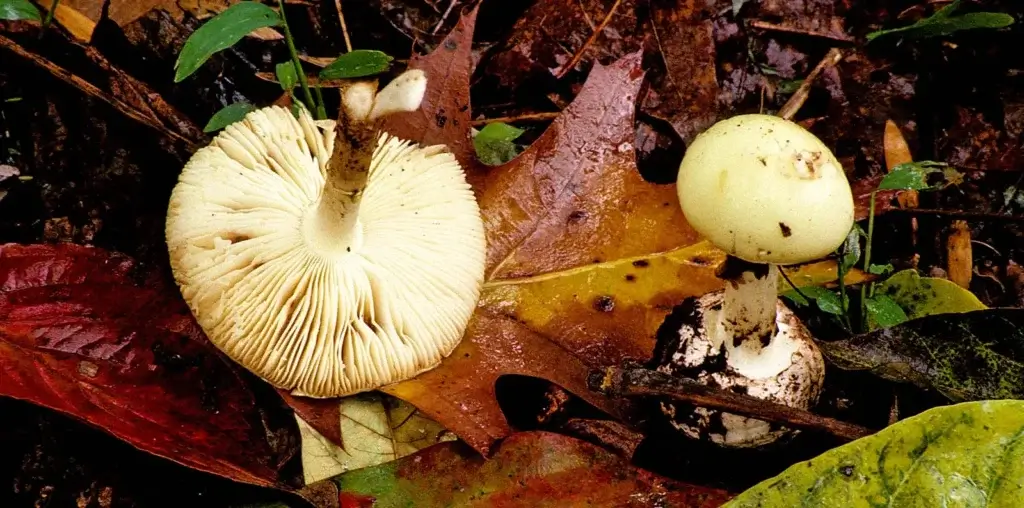Nature’s wonders are often a double-edged sword, captivating us with their beauty while harboring hidden dangers. The death cap mushroom (Amanita phalloides) is a prime example of this paradox. This innocuous-looking mushroom, with its pale cap and graceful silhouette, holds a deadly secret that has led to countless tragic encounters. In this article, we will explore the enigmatic allure of the death cap mushroom, delve into its toxic properties, and discuss the importance of awareness and caution in preventing accidental poisonings.
The Death Cap’s Deceptive Elegance
Nature has an uncanny ability to disguise danger with beauty. The death cap mushroom is a striking example of this phenomenon. Its smooth, bell-shaped cap varies in color from pale yellow-green to olive, and it often features distinctive white patches. This ethereal appearance is part of what makes it appealing to foragers and collectors, who may unwittingly fall prey to its toxic effects.

Toxic Chemistry: Unveiling the Lethal Ingredients
Behind the alluring façade of the death cap lies a toxic chemistry that can spell disaster for anyone who consumes it. The mushroom contains potent toxins, primarily α-amanitin, which is responsible for its lethal nature. Once ingested, these toxins target the liver and kidneys, causing severe damage that can lead to organ failure and death.
Symptoms and Progression of Poisoning
Recognizing the symptoms of death cap poisoning is crucial for seeking immediate medical attention. The initial symptoms often manifest between 6 to 12 hours after ingestion and include nausea, vomiting, and diarrhea. This seemingly benign phase can lead to a false sense of security, as a temporary improvement may follow. However, this is merely the prelude to the more critical phase of poisoning.
As the toxins continue to ravage the body, the individual might experience jaundice, abdominal pain, and a noticeable decrease in urine production. At this stage, irreversible damage may have already occurred, necessitating emergency medical intervention. The progression of symptoms underscores the importance of early detection and prompt medical care.
Death Cap’s Notorious Culinary Connection
The allure of foraging for wild mushrooms has grown in recent years, as more people seek to reconnect with nature’s bounty. Unfortunately, this has led to a rise in accidental poisonings, often due to the misidentification of the death cap mushroom as an edible variety. One of the most notorious cases of death cap poisoning occurred in 2012, when a family in California fell seriously ill after consuming a soup made with foraged mushrooms, including the death cap. Tragically, the family’s youngest member lost his life as a result of this tragic mistake.
Preventing Accidental Poisonings: Awareness and Caution
Education and awareness play pivotal roles in preventing death cap mushroom poisonings. Anyone interested in foraging for wild mushrooms should undergo thorough training to recognize edible varieties from toxic ones. Consulting experienced mycologists or field guides can provide valuable insights into safe mushroom identification.
To further mitigate the risk, it’s advisable to purchase mushrooms from reputable sources rather than relying solely on foraging. This can substantially reduce the chances of inadvertently consuming a death cap mushroom or other toxic species. Additionally, teaching children about the dangers of consuming wild mushrooms can be a crucial step in preventing accidents, as they might be inclined to explore and ingest unfamiliar plants.
The death cap mushroom serves as a somber reminder of nature’s ability to conceal danger beneath a beguiling exterior. Its elegant appearance belies the deadly toxins it harbors, capable of causing irreversible damage to vital organs. The rise in foraging enthusiasts underscores the urgency of educating the public about the dangers of misidentification and the importance of cautious behavior in the wild.
As we continue to marvel at the intricacies of the natural world, let us not forget that knowledge and respect are our best allies in navigating its complexities. The death cap mushroom’s lethal beauty serves as a testament to the intricate dance between life and death, a lesson that humbles us and encourages us to approach the natural world with both wonder and caution.
